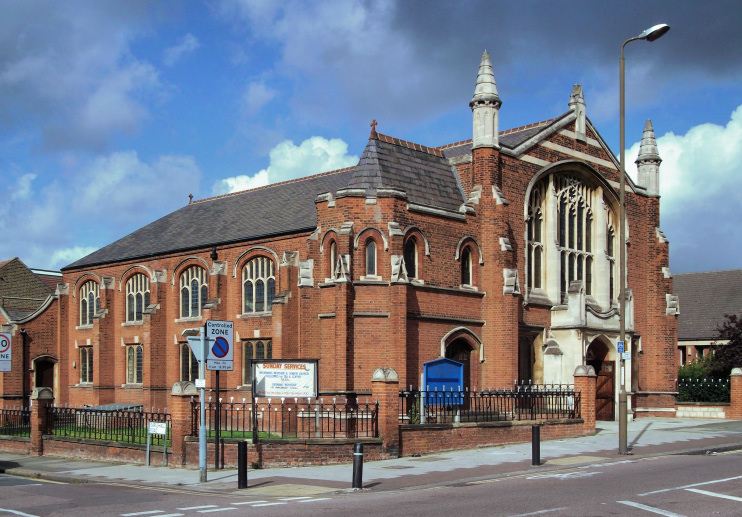Eltham Park
Eltham Park, Greenwich
A primarily Edwardian estate situated in the north-east of Eltham

Although evidence of Roman occupation has been discovered in present-day Glenesk Road, the area remained virtually undeveloped until a mansion called Park Farm Place (later Eltham Park House) was erected in the 18th century.
The last private owner of the mansion and its adjoining farmland was Thomas Jackson, a civil engineer involved in the building of the Bexley Heath Railway, who died shortly before the line opened. His widow died in 1899 and the Roman Catholic Diocese of Southwark acquired Eltham Park House. The building served a succession of purposes, including a children’s home, a boys’ school, a convent and a girls’ school. Repeated alterations and extensions to the mansion mean that very little of its earlier form is now discernible.
The surrounding land was bought by Archibald Cameron Corbett, the kingpin of suburban housebuilding in eastern London at that time. Corbett developed the Eltham Park estate between 1900 and 1914 – and allocated sites for churches to be built. The first to be dedicated was Eltham Park Baptist church, on Good Friday 1903. Shown in the photograph above,* Eltham Park Methodist church opened for worship in 1906 and St Luke’s followed a year later. All three churches are on Westmount Road.
A school opened at the end of Dairsie and Deansfield Roads before Glenesk Road had reached this far. It is now Deansfield primary school (and Deansfield Road has become part of Rochester Way).
Cameron Corbett was a proud Scot and he habitually named the streets of his developments after places and geographical features in his homeland. Richard Gregory explains the local specifics in The Story of Royal Eltham (1909), including the following highlights:
| Road name | Origin, according to Richard Gregory |
|---|---|
| Dairsie and Deansfield | estates in the vicinity of Edinburgh |
| Elibank | the estate of a nobleman in Midlothian, whose eldest son is known as ‘The Master of Elibank’ |
| Elderslie | there is a decided touch of romance about this name, for it is after the birthplace of the illustrious Scottish patriot, William Wallace |
| Beechhill, Balcaskie, Earlshall and Greenvale | estates in the county of Fife |
| Dunvegan | so named from Dunvegan Castle, in the island of Skye, the seat of the MacDonalds |
| Glenlea, Glenlyon, Glenshiel and Glenhouse | names of Highland glens |
| Westmount | from ‘Westmount’ near Paisley, the home of the late Mrs Cameron Corbett |
| Glenure | presumably after the place where ‘James of the Glens’ was assassinated, as set forth by RL Stevenson in his novel Kidnapped |
| Gourock | a fashionable watering place on the Firth of Clyde |
A station opened in 1908, originally named Shooters Hill and Eltham Park. The most expensive houses were built near the station but out of earshot of the trains, and had servants’ quarters. Cheaper properties were built close to the railway line or on the estate’s fringes.
Cameron Corbett was a strict teetotaller and he imposed a covenant that prohibited the sale of alcoholic beverages anywhere in Eltham Park. No public houses were allowed and when an off-licence eventually opened it was situated on the bridge over the railway, not on Corbett’s land.
Many of Eltham Park’s early residents worked at Woolwich Arsenal or at other military establishments in the area and rented their homes at reasonable prices. From 1910 a tram service provided a direct link with Woolwich.
The original Rochester Way came through the north of the district in 1932, and in the 1980s the estate was split more ruthlessly by the relief road (A2) that was cut alongside the railway line. The road also cut the neighbouring public park in two. Eltham Park North is the more picturesque part, except when the blossom is out in Eltham Park South, as shown in the photo below.

St Mary’s Catholic primary school moved from Eltham High Street to the Eltham Park House site on Glenure Road in September 1984. A portion of the land was sold for sheltered housing and a former staff accommodation block in the school grounds became a convent, and later a ‘house of formation’ for the Institute of Our Lady of Mercy.
Eltham Park station closed in 1985, when Eltham’s new station opened.
Cameron Corbett’s power to prevent the sale of alcohol in Eltham Park lapsed with a change in the law in 2005. One consequence of this emancipation was the opening in December 2014 of The Long Pond, a so-called ‘micropub’, at 110 Westmount Road.
The comedian Bob Hope was born in Craigton Road in 1903, and was christened Leslie Towns. The family migrated to America when he was four years old, settling in Cleveland, Ohio.
